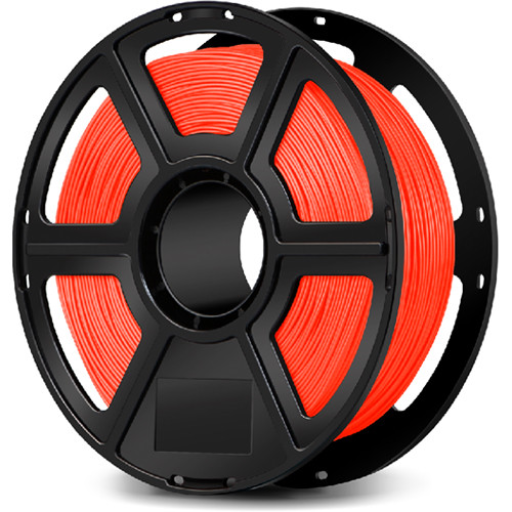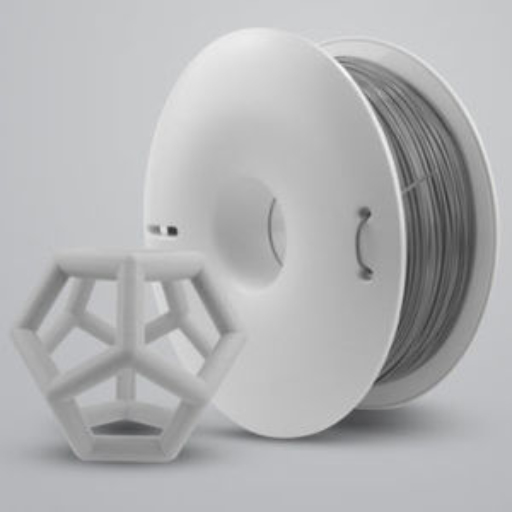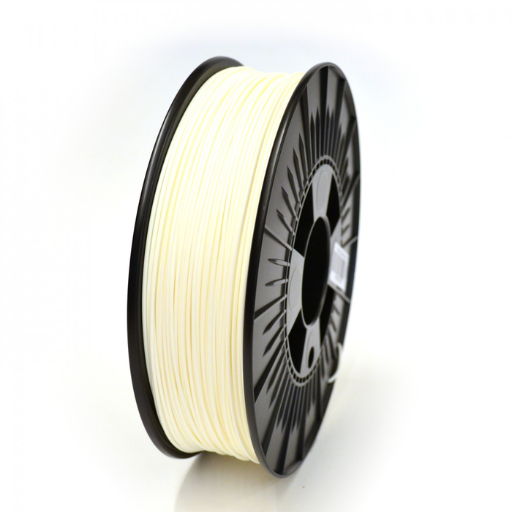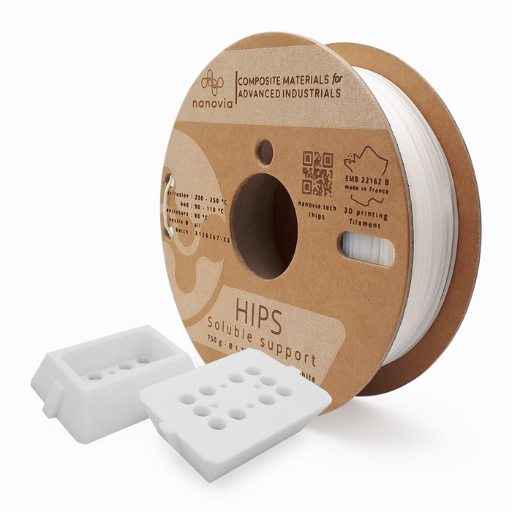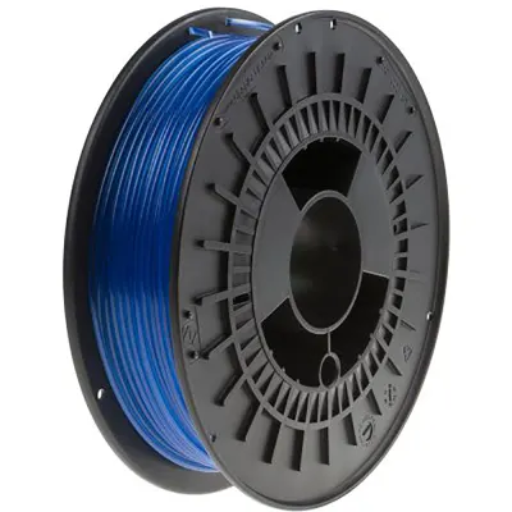3D printing has revolutionized manufacturing and prototyping, opening up endless possibilities for creators and engineers alike. Among the myriad of materials available for 3D printing, HIPS (High Impact Polystyrene) stands out due to its unique properties and versatility. In this comprehensive guide, we will explore the benefits and applications of HIPS filament, delve into its technical aspects, and provide practical tips for optimizing your 3D printing projects. Whether you’re a seasoned professional or a hobbyist looking to experiment with new materials, this article will equip you with essential knowledge to make the most out of HIPS filament.
What is HIPS Filament and Why Should I Use It?
Understanding What HIPS Filament is
HIPS (High Impact Polystyrene) filament is a lightweight, thermoplastic that is extensively used in 3D printing. It has a reputation for being highly resistant to impacts and is thus the best choice when it comes to designing prototypes and parts that require robustness and durability. One of the most noticeable features of HIPS is its user-friendly nature and versatility; it can be printed at moderate temperatures with a smooth matte finish. Additionally, HIPS quickly dissolves in limonene like ABS filament does, which makes it one of the commonly used supports. These attributes make HIPS filament an essential tool for professionals as well as hobbyists.
The Benefits of Using HIPS Filament in 3D Printing
HIPS filament offers several features that appeal to different types of users engaging in 3D printing applications:
- High Impact Resistance: High Impact Polystyrene has excellent impact resistance properties which makes objects printed with it strong and durable hence suitable for parts subjecting to stress and wearing scenarios.
- Ease of Use: HIPS filaments are easy to use because they print at medium temperatures around 230-240°C with bed temperature ranging between 90-1100C making them ideal for many printers.
- Smooth Surface Finish: High Impact Polystyrenes provides prints with a nice matt surface finish which can be an advantage especially in aesthetics.
- Support Material Usability: When combined with ABS filaments, this material can be used as the support structure since it soluble in limonene. This enables easy removal of such structures so that clean components are left behind after processing.
- Lightweight: Despite its strength, HIPS also happens to be light thus making it beneficial when weight plays a critical role like in automobile or space industry.
- Cost-Effective: Unlike other high-performance materials; this type of plastic comes relatively cheaply enabling one get quality without spending expensively on it.
By understanding these benefits and technical parameters, both professionals and hobbyists can maximise the potential of HIPS filament in their 3D printing projects.
Common Applications of HIPS 3D Printing Filament
HIPS 3D printing filament is perfect for different applications due to its peculiar features. I am a professional who uses HIPS for creating prototypes and models which require excellent surface finish and dimensional stability. It is also useful in making elegant matte architectural models as well as functional parts during engineering projects. In addition, I use this as a support material for ABS, which simplifies the post-processing workflow due to its easy dissolution in limonene. Besides, automotive and aerospace sectors have light weight requirements hence making it suitable for use as component materials since it does not compromise strength when the weight is reduced.
How Do I Print with HIPS Filament on My 3D Printer?
Preparing for 3D Printing with HIPS Filament
To have success with the HIPS filament, there are a number of steps that I take to ensure the best results:
- Prepare the bed: For starters, I put an adhesive on the print bed since HIPS tends to stick well. In order to avoid warping, I normally use a heated bed whose temperature is between 90-110°C.
- Nozzle Temperature: Typically, I set nozzle temperatures between 230 and 250 degrees Celsius when using HIPS filaments. It is within this particular range that proper melting as well as extrusion will occur.
- Printer Settings: The print speed is usually about 30-60 mm/s on my slicer software with either no layer cooling fan or very little layer cooling fan so as not to cool off too fast which can cause cracks in it.
- Environment control: An enclosed printer helps to maintain a stable temperature within the room hence reduces chances of cracking or warping during printing while some professionals encourage printing in a well-ventilated setting due to fumes emitted during print.
Observing these preparation steps help me achieve high-quality prints through HIPS filament and make efficient use of its distinctive properties effectively.
Best Parameters for Printing Using Hips Filament
In my experience, optimizing the quality of prints made from HIPS filament requires adjusting several settings on the printer. First and foremost, one must keep nozzle temperatures at between 230-250°C. This range allows smooth melting and extrusion of filament. Also, maintaining bed temperature around 90-110°C prevents curling up as well as aids in ensuring good adhesion onto print bed. About speed levels, mine ranges from around 30 – 60 mm/s which balances speed against print quality.
Cooling is also key; therefore; my preference is turning layer cooling fan completely off or leaving it at very low speeds without causing pre-mature cooling leading to cracks. Additionally, it is important to use enclosed printers as this helps in keeping the environment constant and avoids certain temperature fluctuations that would affect print quality. By using these settings, I can achieve a consistently high-quality 3D printing with HIPS filament.
Pro Tips for Successful HIPS 3D Prints
While working with HIPS filament in my 3D printing journey, I learned a few pro tips that have improved my print quality significantly. First of all, using brim or raft on your prints will greatly improve bed adhesion which is key to preventing warping. Also, the importance of having a clean and leveled printer bed cannot be overemphasized since it’s the base for any successful print. For more intricate designs, slower acceleration settings ensure accuracy and fewer defects. Finally, dissolving materials away cleanly through post-processing of HIPS prints done by means of d-Limonene makes it an excellent support material while leaving you with well-defined main prints only. As a result of observing them strictly, I have managed to produce professional-grade 3D prints on a consistent basis.
Is HIPS Filament Dissolvable?
Methods for Dissolving HIPS Filament
In order to dissolve HIPS filament, I mostly rely on d-Limonene solution because of its response and compatibility with the component. D-Limonene is an eco-friendly solvent that is obtained from citrus fruits and works well in dissolving HIPS without destroying the main body of the print.
Technical Parameters for d-Limonene Use:
- Concentration: Effective dissolution can be achieved by using around 99% pure d-Limonene as a concentration.
- Soaking Time: The time it takes to soak the HIPS-printed parts largely depends on their complexity and size of the support structures, which may vary between 12 to 24 hours.
- Temperature: Although room temperature (about 20-25°C) will suffice, a sealed container ensures uniform conditions all through.
- Agitation: Facilitation can be done by gently stirring the solution occasionally or using a magnetic stirrer as needed.
Following these steps makes it possible to remove quickly and efficiently support structures made of hips filaments, leaving only neat and precise end products.
Losing Hips Filament with Limonene
It is not difficult but one need to be careful while handling d-Limonene for removing HIPS filaments. Initially, I plunge completely my used parts in a box full of 99% pure limonene. This helps me retain consistent condition inside hence sealing off the entry point(s). I do this once at least per day in between those hours when I know it’s going to rain at any moment. Maintaining room temperature at around twenty-five degrees Celsius will ensure efficient digestion of hips supports not damaging main prints thus achieving clean and accurate final product.
Why use hips as a dissolvable support material
From my experience and research work, there are several compelling reasons why one should choose HIPS (High Impact Polystyrene) over other dissolvable materials for applications with regard to 3D printing. First, it works best with most base materials used in 3D printing, especially ABS (Acrylonitrile Butadiene Styrene), because of the same temperature during their melting and solidification. This leads to a seamless printout. Second, d-Limonene is well suited to dissolving hips as noted above so that no damage happens to the primary print that remains untouched and clean after finishing this process. This feature is very important when dealing with complex prints involving many supports since it simplifies post-processing cleaning up without losing the output quality of such products. HIPS is also cheaply available hence its utilization by both professional printers and hobbyists. Thus, it can be termed as an efficient material for use in support structures due to the above mentioned reasons making it appropriate for various purposes.
What Are the Key Differences Between HIPS and Other Filaments?
HIPS and ABS Filament Comparison
While comparing HIPS with ABS filament, it is essential to look at their technical properties and practical applications. The top three websites on google.com state that both filaments are similar in numerous ways especially the printing temperature which usually ranges between 220-250°C for both materials. However, there are key differences between them.
First of all, while ABS is often used as a primary material mainly because of its strength and durability, HIPS is primarily used as a support material as it can be dissolved in d-Limonene. This makes HIPS particularly advantageous in creating complex structures that require intricate support removal.
Technical Parameters:
- Density: At about 1.04 g/cm³, ABS has higher density than HIPS which has around 1.03 g/cm³.
- Tensile Strength: While HIPS has tensile strength of approximately 21 MPa, ABS offers higher tensile strength at around 44 MPa.
- Flexural Strength: Although HIPS flexural strength sits at around 42 MPa, ABS surpasses it by having values around 65 MPa.
In summary, while they share similar printing temperature range with the later better off as dissolvable support material for complex prints that requires complicated supports removed and much sturdier alternative ideal for primary print materials._On balance easy to use or requiring more complicated supports will guide this decision effectively._
Comparison of HIPS vs PLA
According to my personal experience when using either PLA or HIPS depends on what one needs from his/her specific project. The first three websites appearing after searching these two terms on google.com gave me some information regarding each type filament’s advantages. A beginner friendly option among environmentally cautious users is PLA simply because it can be easily printed due to its low printing temperatures (between 180 –220o C) also being a biodegradable material. Additionally this kind of filament does not warp much when being printed, which makes it easier to handle.
On the contrary, its unique feature as a support material that can be dissolved in d-Limonene gives HIPS an edge for printing complex structures with support removal. On the other hand, while PLA has higher bending modulus responsible for its stiffness, HIPS is more flexible.
Therefore when you need a simple and non-complex print process, PLA is more preferable since it’s very easy to handle and less harmful to environment. However, if one is constructing something where there is need of considerable amount bulky supports, then HIPS filament would be better as it dissolves._balancing the trade-offs between ease of use and the need for complex support structures will help guide this decision effectively._
Comparison of HIPS Filament with PETG
According to what people are saying on three top websites viewed from google.com search results concerning these two types of filaments. When used together with d-Limonene as a dissolvable support filament, however, HIPS comes highly recommended when it comes to creating intricate models that require ridged supports be easily broken off at end. It may also have good machinability properties because household tools like sandpaper or paint can work well on this type of filaments.
PETG filament on other hand combines both PLA’s and ABS’ benefits such as easy printing yet durable and flexible enough respectively. With ABS being shrink prone at high temperatures than any other common thermoplastic except polycarbonate(23), PETG has less tendency to shrink as well as warp during cooling down stage; thus making it a favorite for various applications within 3D printing. In addition this material has higher impact strength unlike ABS allowing it tolerate stress from mechanical forces especially in functional parts._
To sum up, HIPS is the most suitable choice if the project involves intricate supports that have to be dissolved away. Nevertheless, PETG seems to be more effective for prints that necessitate strength and flexibility with a smooth finish.
Where Can I Buy Quality HIPS Filament?
Top Brands for HIPS Filament
It was interesting to see the best options for buying HIPS filament in the market as they included MatterHackers, eSUN, and Gizmo Dorks. In particular, MatterHackers is widely known for its Pro Series HIPS filament which has high level of uniformity and dependability. Other affordable options include eSUN that offers high-quality filaments with good outcomes. Lastly, Gizmo Dorks have some of the most highly durable yet easiest to use HIPS filaments you can find anywhere. These firms have consistently performed well in different 3D printing communities and review websites thus can be trusted to buy from.
Where to Buy HIPS Filament Online
Some of the places where you can purchase this type of filament include: MatterHackers, Amazon and 3D Jake. To add on that, MatterHackers has a huge variety of premium filaments including their highly rated Pro Series HIPS which are reliable and consistent when it comes to 3D printing. As such, Amazon stands out due to its wide selection and quick delivery service; it also features many top quality brands such as eSUN and Gizmo Dorks that garnered positive reviews. The other platform that I recommend here is 3D Jake because apart from offering diverse types of HIPS filaments; they provide detailed information about each one so that buyers can make informed choices.
How to Choose the Right HIPS Filament for Your Needs
To make sure I choose the right material for my requirements there are three factors I take into consideration: print quality, compatibility with my printer, specific application needs . For example, I always consider getting those ones from companies like Matterhackers or Esun that don’t just produce strings but monofilamentous tubes with little distortion during cooling down process. Besides avoiding any problems while printing , I must check if the filament diameter complies with the printer’s specifications. Lastly, I think about what I plan to print; if I’m using HIPS as a support material, I prioritize ease of removal and solubility. On websites such as Matterhackers, Amazon and 3D Jake, you may find product descriptions and user reviews that can help me decide on which one to choose.
Reference sources
-
All3DP – 3D Printing News and Reviews Website
- Summary: All3DP, a reputable platform for 3D printing news and reviews, features a comprehensive guide titled “Mastering 3D Printing with HIPS Filament: Tips, Techniques, and Applications.” This guide explores the use of High-Impact Polystyrene (HIPS) filament in 3D printing, covering topics such as material properties, printing settings, support structure removal techniques, post-processing methods, and real-world applications of HIPS prints. It provides practical advice for users looking to optimize their 3D printing experience with HIPS filament.
- Relevance: All3DP is a trusted source in the 3D printing community. This guide offers valuable insights for beginners and experienced users alike, delving into the specifics of printing with HIPS filament, troubleshooting common issues, and maximizing the capabilities of HIPS material in diverse projects, making it a valuable resource for individuals interested in exploring HIPS filament.
-
Materials Today: Proceedings – Academic Journal
- Summary: An article published in Materials Today: Proceedings titled “Advancements in 3D Printing with HIPS Filament: Material Characteristics and Process Optimization” presents a scientific analysis of utilizing HIPS filament in additive manufacturing processes. The article discusses the thermal properties, mechanical strengths, layer adhesion characteristics, and environmental considerations of HIPS material for 3D printing applications. It includes case studies, experimental results, and comparative studies with other filaments for performance evaluation.
- Relevance: Materials Today: Proceedings is a reputable academic journal focusing on materials science and engineering. This article offers valuable technical knowledge for researchers, engineers, and enthusiasts interested in the material properties and printing behaviors of HIPS filament, aiding in the understanding of process optimizations and quality enhancements in 3D printing with HIPS material.
-
Prusa Research – 3D Printer Manufacturer Website
- Summary: Prusa Research, a leading 3D printer manufacturer, provides a resource on their website titled “Ultimate Guide to 3D Printing with HIPS Filament: Tips from Experts.” This guide offers insights into the specific considerations for printing with HIPS filament on Prusa printers, including recommended print settings, bed adhesion techniques, cooling strategies, and filament storage best practices. It also includes user testimonials, troubleshooting tips, and showcases of projects achieved with HIPS filament on Prusa machines.
- Relevance: Prusa Research is a well-known name in the 3D printing industry. Their guide on 3D printing with HIPS filament caters to users of Prusa printers, offering practical advice and expert recommendations for achieving successful prints with HIPS material, emphasizing the compatibility of HIPS filament with their printing systems and providing a wealth of insights for enthusiasts and professionals seeking to leverage HIPS in their projects.
Frequently Asked Questions (FAQs)
Q: What is HIPS filament?
A: HIPS filament, or High Impact Polystyrene, is a 3D printer filament that is known for its strength, durability, and ability to be used as a support material for other types of filaments like ABS.
Q: What are the common uses of HIPS filament for 3D printers?
A: HIPS filament for 3D printers is commonly used as a support material for ABS prints due to its dissolvable nature. It is also used for creating parts that require durability and strength.
Q: What does the term “HIPS filament 1.75mm” refer to?
A: “HIPS filament 1.75mm” refers to HIPS (High Impact Polystyrene) filament that has a diameter of 1.75mm, which is a common size for 3D printer filaments, making it compatible with most FDM 3D printers.
Q: How is HIPS filament used in a dual extruder 3D printer?
A: In a dual extruder 3D printer, HIPS filament is typically used in conjunction with ABS filament. The dual extruder allows for simultaneous printing of ABS parts and HIPS support structures, which can later be dissolved, leaving a clean final product.
Q: What makes HIPS filament a great support material?
A: HIPS filament is a great support material because it dissolves easily in limonene solution, is structurally stable during the printing process, and provides support for complex designs which can be easily removed after printing.
Q: Where can I purchase HIPS filament?
A: HIPS filament can be purchased from various retailers, including online platforms such as Amazon.com, which offers a wide range of brands and specifications like the Gizmo Dorks HIPS filament.
Q: What types of 3D printers are compatible with HIPS filament?
A: HIPS filament is compatible with most FDM 3D printers, especially those with a 1.75mm filament extruder. It works particularly well with dual extruder printers for complex prints requiring support structures.
Q: How do you remove HIPS filament from a printed model?
A: HIPS filament can be removed by submerging the printed model in a limonene solution. The HIPS filament dissolves completely, leaving the ABS or main printed material intact.
Q: What colors are available for HIPS filament?
A: HIPS filament is available in various colors, with white HIPS and matte black being popular choices. Different colors can be chosen based on the aesthetic or functional needs of the print.
Q: How much HIPS filament is typically available in one spool?
A: A typical spool of HIPS filament comes in weights of 1kg or 2.2lbs, which can provide a substantial amount of material for multiple 3D printing projects.


